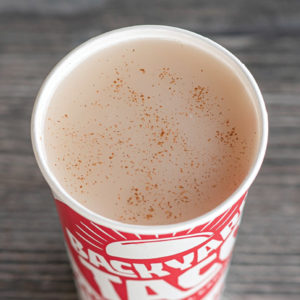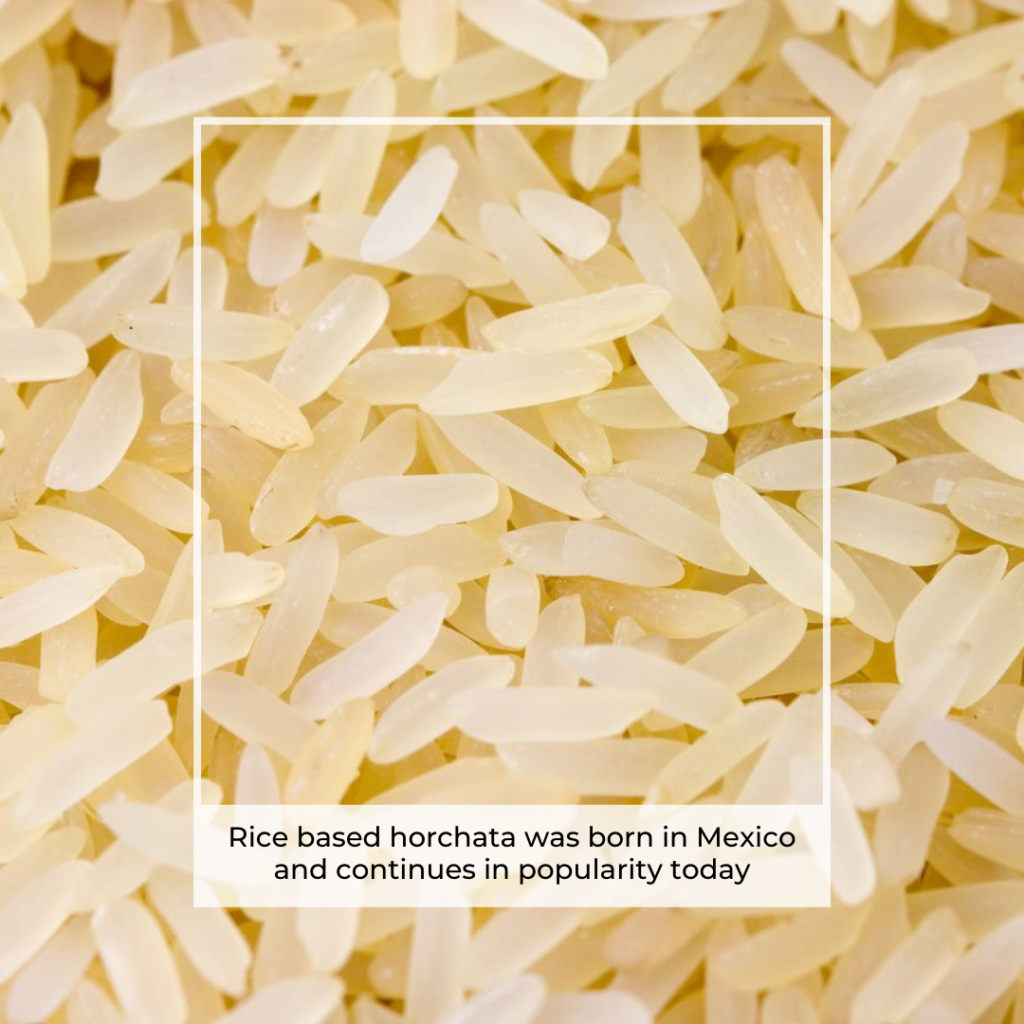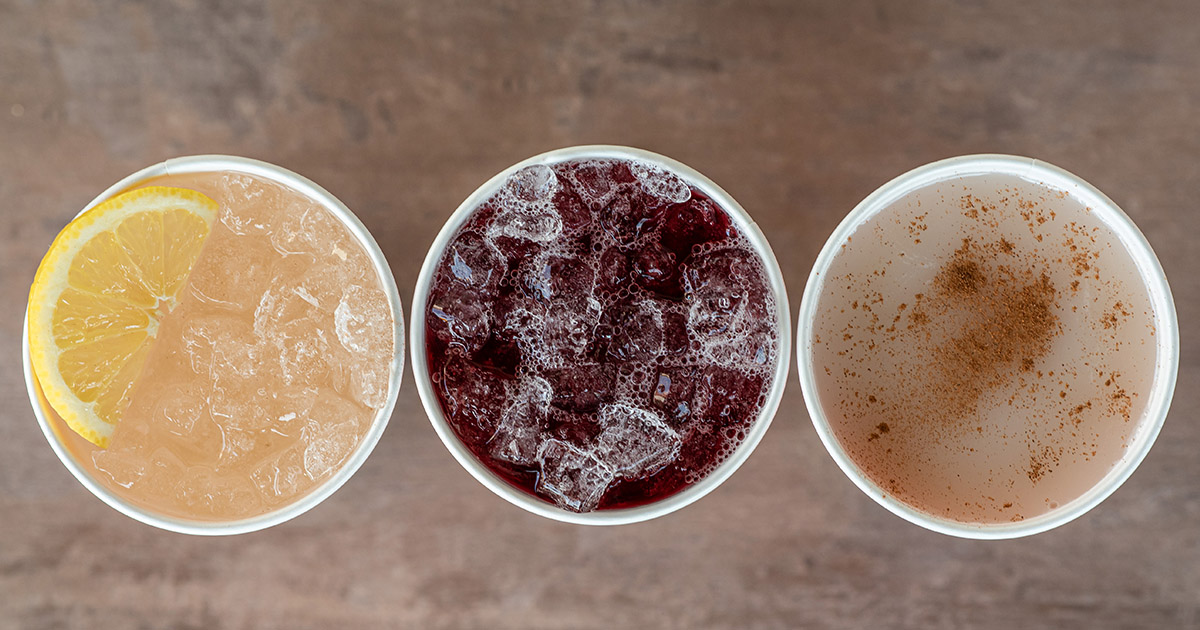Creating the perfect beverage to complement a delicious meal is immensely satisfying. When it comes to Mexican cuisine, nothing pairs with these flavors better than horchata. In fact, in 2019, horchata became one of the most popular flavors in the country. With its increased rise in popularity, many are left curious to learn more horchata facts.
However, it can be difficult to nail down what, exactly, horchata is. The term horchata is a generic Spanish word used to describe a variety of sweet drinks that share a similar production process and ingredients. Horchata encompasses multiple different drinks that are made with a combination of grains, ground nuts, and spices. While these key ingredients may make up the base of the beverage, other additives or substitutes are used around the world.
What Is Horchata?
Depending on where you are getting your horchata, flavor profiles will change based on taste as well as varied preparation processes. While the recipes may vary, it is a relatively simple beverage, requiring few ingredients. In general, horchata is a sweet, dairy-free beverage that is made via a process of soaking grains, nuts, or seeds overnight in water. This mixture is then drained, and sugar or other spices are added to sweeten the beverage.
Horchata relies on the flavor of the spices and other elements added to create variations in flavor and texture. Horchata is widely consumed in Mexico, which is the version Americans are often most familiar with. However, there are different adaptations of horchata throughout Latin America, as well as Africa.
History of Horchata
Horchata was popularized in Spain, but its roots date back as far as 2400 BC in North Africa. In fact, many researchers believe horchata was present in ancient cultures long before this time. In Egypt, remnants of a similar drink have been found in archeological sites. Ancient Romans had a similar drink that was based on barley, because they believed that barley had healing, medicinal properties. They referred to this drink as hordeata.


When the Spanish conquistadores arrived in Mexico, they brought horchata with them. However, they did not bring its key ingredient, tiger nuts. Since there are no tiger nuts native to Mexico, adaptation was required. It turned out to be highly adaptable, maintaining its root process and ingredients while also making room for variety and experimentation.
A bit of experimentation led to the creation of the rice-based horchata we are familiar with today. Once a suitable substitute for tiger nuts was found, the rice-based horchata drink quickly grew in popularity and spread across Mexico and Central America. Today, horchata continues to be one of the most popular drinks enjoyed in Mexico.
Speaking of popular drinks, Mexican Coke is a local-to-international favorite that some prefer over its American-made cousin.
What Is in Mexican Horchata?
When it comes to determining horchata’s ingredients, it is important to remember that there are several different varieties to be found around the world. The most famous in the West is the Mexican rice-based drink that is sweetened with sugar and is often flavored with cinnamon. Across Mexico, horchata can be enhanced using a variety of different elements, such as seeds, fruits, and even edible flowers. However, in most instances, horchata is made simply, with rice, sugar, and cinnamon.
Varieties of Horchata
While Mexican horchata is made using rice that has been soaked overnight in water, sugar, and cinnamon, the ancient Spanish recipe that is still used today in places like Valencia used tiger nuts instead of rice to create their refreshing beverage. Horchata is a popular beverage across several different Latin American countries and cultures. As a result, there are multiple different versions of horchata to be found in the region.
Horchata de melon is made using ground melon seeds. In Puerto Rico, the primary version of horchata uses sesame seeds, spices, rice, almonds, evaporated milk, coconut milk, allspice, and rum. This beverage is often referred to as horchata de ajonjoli. In Central American nations, they follow an overnight soaking process to make a beverage that consists of legumes, seeds, grains, herbs, and spices. In countries like El Salvador and Honduras, the drink is called semilla de jicaro, and it is made with licorice-flavored seeds, cocoa, and sometimes ground peanuts, almonds, or cashews. In Ecuador, a play on this beverage is called horchata lojana but is more of a red herbal tea made with flowers.
In fact, horchata can even change depending on where you are in a particular country. One restaurant may include different ingredients from another just a few blocks away. This variation can continue when purchasing horchata at a store or from a local vendor. Still, the variety is one of the most appealing things about horchata—you can enjoy the same beverage in hundreds of different ways. What stays the same is the commitment to simple, natural ingredients to create a beverage that is light and refreshing.
Horchata Appearance and Flavor
As you might expect, the appearance and flavor of horchata can vary greatly depending on the recipe used. In general, this drink is mild, sweet, and creamy. Despite its creaminess, horchata is meant to be refreshing. This drink is perfect for a hot day in the summer sun or following a workout. You can also heat horchata for a creamy, spicy, comforting drink. Depending on the ingredients used it can be made to be filling, but in general, it is meant to be a lighter beverage.
Horchata is often paired with pastries or freshly baked bread, yet it pairs perfectly with a delicious meal that has a good, spicy kick. It can accompany food but tastes great all on its own. Horchata is most often spiced with cinnamon, but can also be spiced with nutmeg, vanilla, allspice, star anise, or cloves. In Mexico, you may even find added fruit flavors, such as berries, apricot, or cantaloupe.
Horchata Benefits

Horchata has long been enjoyed for its health benefits, both perceived and real. Generally speaking, horchata is low in fat and rich in antioxidants. Antioxidants are great for your skin and hair and can help to reduce inflammation in the body. This can help with pain relief and reduce the inflammation that can sometimes lead to other chronic diseases.
Horchata is also full of vitamins and other nutrients the body craves. It is a source of vitamins C and E, and is also rich in minerals like calcium, magnesium, and iron. Most recipes are dairy and gluten-free, ensuring horchata is easy on the stomach. When you want a beverage that is simple, natural, and provides health benefits with ease, horchata is the perfect option for you. This light, creamy beverage is a must-try for all ages.
Try Horchata Today
If you have yet to try horchata, you are truly missing out. This beverage has a long, rich history that dates to the ancient Egyptians and continued to spread globally, adapting to the ingredients and flavor profiles of different regions. The drink continues to be popular across Latin America, Northern Africa, and of course Mexico and the United States. While ingredients may change a bit between regions, the traditional overnight soaking process stays the same. This allows for just a few simple ingredients to create a drink that is flavorful and refreshing.
Head on over to a Backyard Taco location near you to pick up some fresh, authentic tacos and tasty horchata!

Dr. Tyler loves tacos! He is one of the owners of Backyard Taco, and can sometimes be found moonlighting there at night or on the weekends.
Dr. Tyler Robison is an alum of Mesa’s Mountain View High School. He graduted from Brigham Young University before being accepted to the “Top Ten-nationally ranked” University of Louisville in Kentucky, where he earned his Doctorate in Dental Medicine and a Master’s Degree in Oral Biology. He graduated with honors in the top ten percent of his class. Dr. Robison continued at the University of the Pacific in San Francisco, where he received a second master’s degree in dental science and his orthodontic certification.
Dr. Tyler enjoys serving in his community. He is a provider for the Smile Back Foundation, which offers scholarships for free dental treatment to underprivileged East Valley students. He is also a Major in the U.S. Army Reserve and served during Operation Enduring Freedom in 2008.
Dr. Tyler Robison’s favorite pastimes include spending time with his family on the lake, at the beach, or on the slopes. He is an avid and crazy snowboarder! He has three incredible sons and one sweet daughter: Caden, Jace, Crew, and Bliss.




